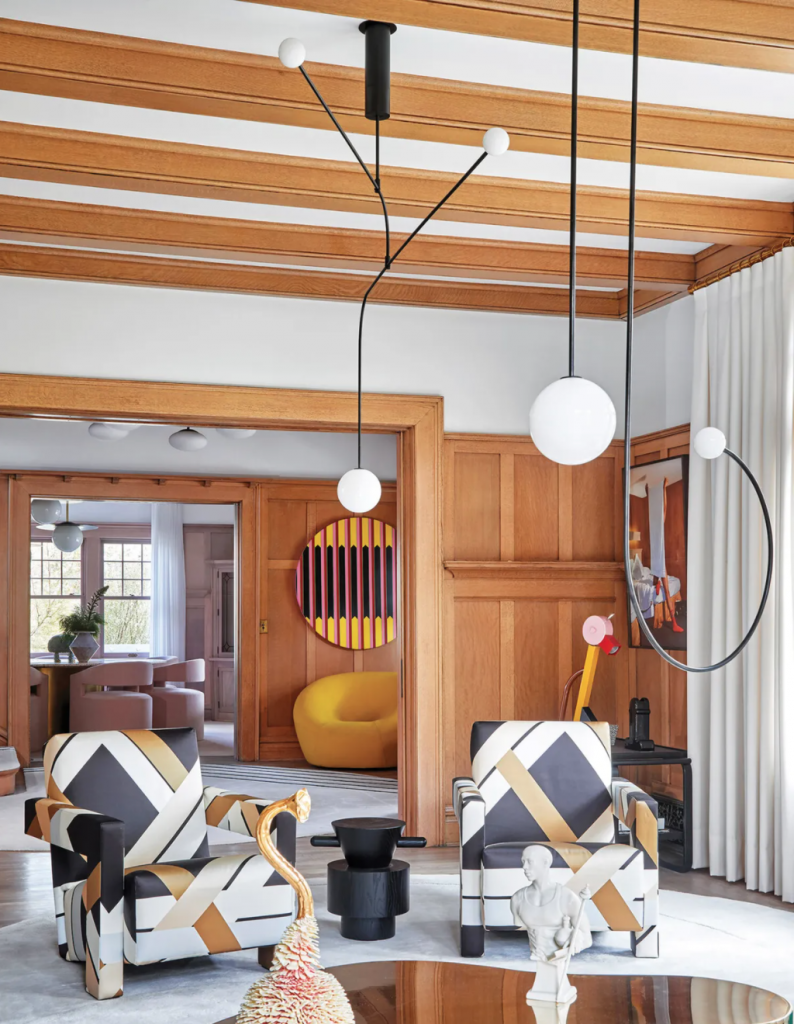COMBINING FINISHES AND SHEENS LEADS TO AN INTERESTING LOOK FOR INTERIORS
Bronze, brass, nickel, chrome—metals make for some of the most luxe and layered finishes in the home. And the beauty is, you don’t have to choose and (and stick with) just one. “Combining different metal finishes and sheens gives the impression that a design evolved over time,” says Killy Scheer of Scheer & Co., an interior design firm in Austin, Texas. “It’s a great way to create depth and a look that feels collected.”
KEEP THINGS BALANCED
While incorporating several metals into one space sets an inspired tone, most designers suggest selecting a main material that’s repeated throughout. Scheer recommends using a dominant metal and then choosing a few supporting iterations to use as accents. “If you’re working with several different components, make the dominant metal an easy one to match across different brands,” she says. “Chrome looks basically the same no matter the manufacturer, whereas oil-rubbed bronze can vary. In that case, chrome would be your dominant metal and oil-rubbed bronze can be an accent; just be sure it all comes from the same manufacturer, so the finishes always match.”
Vancouver-based designer Stephanie Brown also prefers to identify one metal as the architectural finish. “It makes for a consistent appearance throughout the home,” she says. “We’d typically use it on door hardware, railings, plumbing fixtures, lighting, and cabinet hardware. We then bring in one or two other metal finishes throughout as special accents.”
The reason it’s often best to stick with one lead metal is the look can get jumbled when warm and cold tones are all vying for the spotlight, says New York-based designer Ghislaine Viñas. It’s important to establish a hierarchy. If you’re working with brass, for example, have the doorknobs, hardware, and architectural features like faucets rendered in brass, and accessorize with other warm metals like copper or gold leaf. “This helps create a cohesive, balanced space,” Viñas says.
Another way to create balance is by playing with the way different materials and surfaces reflect light, says Cara Fox, owner and lead designer of The Fox Group in Salt Lake City. She suggests mixing a finish such as unlacquered brass—a living metal that patinas over time—with a high-lacquer paint that’s really glossy. “Similarly, a matte black or satin nickel paired with velvet or another shimmery fabric creates a beautiful contrast of sheens. Linen paired with a shiny metal will create the same effect,” Fox says.

CONSIDER THE COLOR PALETTE
Metals have either warm or cool tones, and whether you stick with all one temperature or mix things up is a matter of preference. For example, Mary Maydan, founder and principal of Maydan Architects in Palo Alto, Calif., prefers using one color family. When the color palette is white and gray, for instance, she often adds metals in cool tones such as chrome, stainless steel, or silver. “That said, it can be nice to add an accent metal, like copper, that is not in the same family to give warmth to the room. Often, we’ll do this with an accent piece, like a copper metal sculpture in a library,” she says.
The key to creating a curated look is repetition, says Nicole Michael of Nicole Michael Designs in Los Angeles. “For example, if a living room light fixture is aged brass, introduce it again through an accessory, a drinks table, a decorative mirror, or even picture frames,” she says. “When you repeat colors, it helps your eye travel through the space, creating balance in the room.”
CREATE CONTRAST
In an effort to avoid a too-industrial feel, temper the look with other textures. “Natural materials such as stone and wood always mix well with metals—but, really, the key to mixing anything successfully is creating the right contrasts,” Scheer says.
In a more eclectic or traditional interior, Brown might play off brass accents such as light fixtures with rich hues on furnishings, like jewel-toned velvets or cognac-colored leather. In a more minimal interior with black and rose gold metal, she keeps furniture and textiles soft and monochromatic in shades of gray and white with textural variation.
“One metal finish we consider a neutral is stainless steel,” Brown says. “To me, it’s the equivalent of blue jeans; it’s so common and understated that it usually doesn’t factor in as a metal and you can easily put other metals with it in the same space.” For instance, stainless kitchen appliances can be paired with one or two more metal finishes on the cabinet hardware, plumbing, and lights.

CONSIDER THE SPACE ITSELF
Just how and where you mix your metals matters. “A bathroom is a great place to mix metals,” Michael says. For example, the cabinet and door hardware can be one finish, the light fixtures a second finish, and the mirror and plumbing fixtures could be the third finish (consider looking for a two-tone piece to help tie everything together), she says. “Never mix finishes between plumbing fixtures: If the faucet is one finish and the shower head and trim are a different finish, it will read as a mistake.”
Lighting fixtures and furniture—a vintage gold lamp and a matte black metal coffee table—can provide a great opportunity for mixing metal finishes, Brown says. But this effect can also be achieved through the use of accessories—matte gold sculptural objects and picture frames on your shelves are an easy starting point, she says.
Originally posted by Sotheby’s International Realty.
